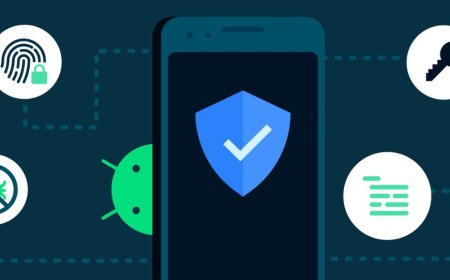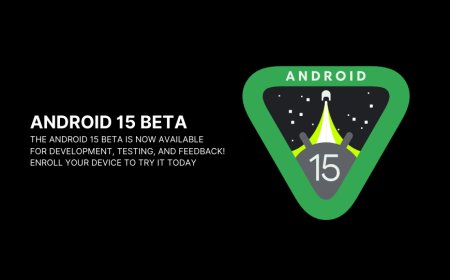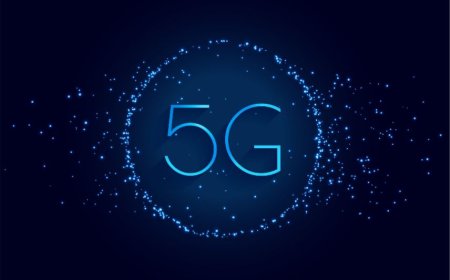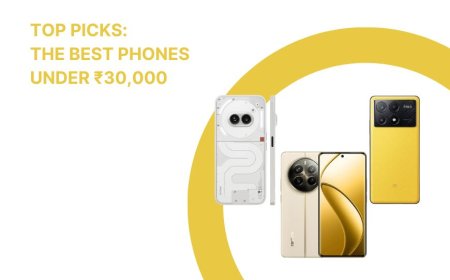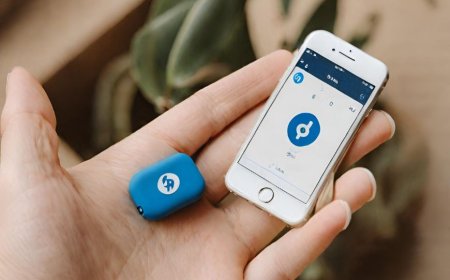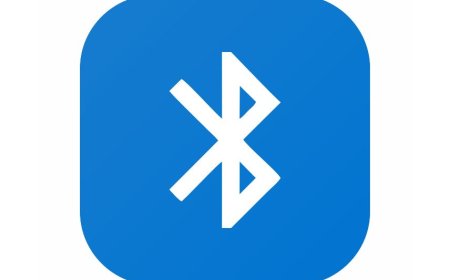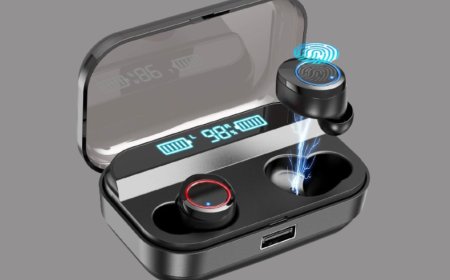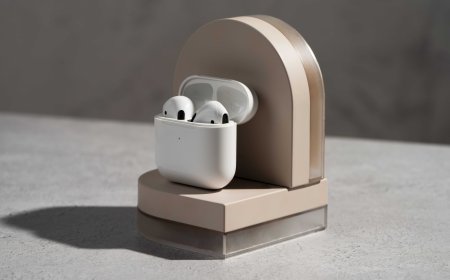Bluetooth 5.0: Revolutionizing Wireless Earbud Connectivity
Unleash the potential of wireless earbuds with Bluetooth 5.0. Dive into the world of Tectoks and revolutionize your audio connectivity like never before.
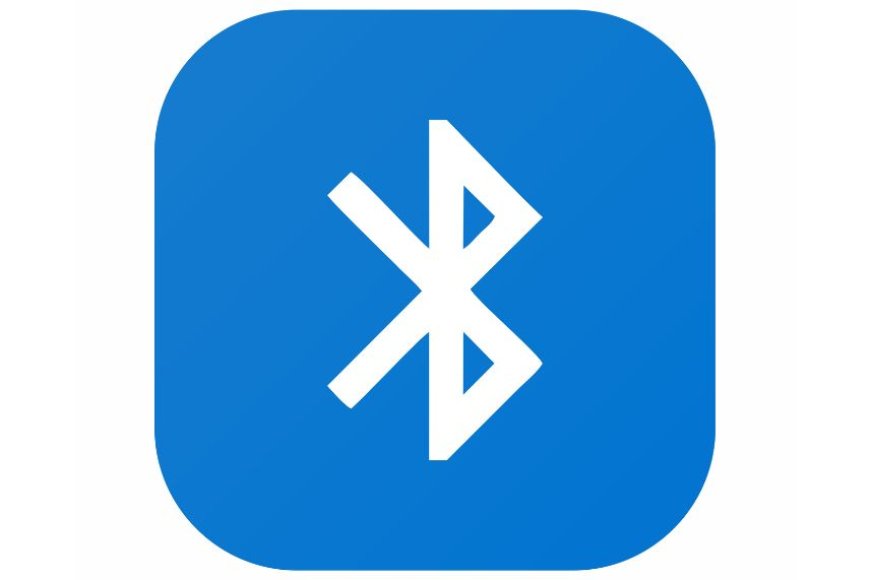
Table of contents:
I. Introduction
II. Bluetooth 5.0 Overview
III. LE Audio and LC3 Codec
IV. Wireless Earbuds Today
V. Noise Cancellation and Battery Life
VI. Future Innovations
VII. Conclusion
I. Introduction
Bluetooth is a wireless technology that has been around for over two decades, enabling devices to communicate and exchange data over short distances. It has revolutionized the way we use wireless devices, such as headphones, speakers, keyboards, mice, and more. However, Bluetooth is not a static technology. It has evolved over the years, improving its performance, reliability, and functionality. The latest version of Bluetooth, Bluetooth 5.0, was released in 2016 and has brought significant enhancements to wireless technology, especially for wireless earbuds.
II. Bluetooth 5.0 Overview
Bluetooth 5.0 is the most advanced and powerful version of Bluetooth to date. It has several key features that make it superior to previous versions, such as:
-
Low energy consumption: Bluetooth 5.0 consumes less power than previous versions, which means longer battery life for wireless devices. This is especially important for wireless earbuds, which have limited battery capacity and need to be recharged frequently.
-
Improved data transfer: Bluetooth 5.0 can transfer data at a faster rate and a longer range than previous versions. It can achieve up to 2 Mbps of data transfer speed and up to 240 meters of range in ideal conditions. This means better sound quality and a more stable connection for wireless earbuds.
-
Dual audio: Bluetooth 5.0 can support two independent audio streams from one device to two different wireless earbuds. This means you can share your music or podcast with a friend without using a splitter or compromising the sound quality.
III. LE Audio and LC3 Codec
One of the most exciting features of Bluetooth 5.0 is the introduction of LE Audio, which stands for Low Energy Audio. LE Audio is a new standard for wireless audio that uses a new codec called LC3, which stands for Low Complexity Communication Codec. LC3 is a compression algorithm that can deliver high-quality audio with low power consumption and low latency. LC3 can also adapt to different bandwidths and environments, ensuring optimal sound quality in various scenarios.

LE Audio and LC3 Codec are designed to provide superior wireless audio for wireless earbuds as well as other devices such as hearing aids, speakers, and TVs. LE Audio and LC3 Codecs can offer the following benefits for wireless earbuds:
-
Higher sound quality: LE Audio and LC3 Codec can produce clearer and richer sound than previous Bluetooth audio standards, such as SBC and AAC. LE Audio and LC3 Codec can also reduce noise and distortion, resulting in a more immersive and enjoyable listening experience.
-
Lower power consumption: LE Audio and LC3 Codec can reduce the power consumption of wireless earbuds by up to 50%, compared to previous Bluetooth audio standards. This means longer battery life and less frequent charging for wireless earbuds.
-
Lower latency: LE Audio and LC3 Codec can reduce the latency of wireless earbuds by up to 10 times, compared to previous Bluetooth audio standards. This means less delay and synchronization issues between the audio and the video, which is crucial for watching movies or playing games with wireless earbuds.
IV. Wireless Earbuds Today
Wireless earbuds are one of the most popular and convenient ways to enjoy wireless audio. They are small, portable, and easy to use, without the hassle of wires or cords. Wireless earbuds have become more advanced and sophisticated over the years, incorporating features such as touch controls, voice assistants, noise cancellation, and more.

However, not all wireless earbuds are compatible with Bluetooth 5.0, LE Audio, and LC3 Codec. Some wireless earbuds still use older versions of Bluetooth, such as Bluetooth 4.2 or 4.1, which may not support the full potential of Bluetooth 5.0. Some wireless earbuds may also use proprietary codecs, such as Sony’s LDAC or Apple’s AAC, which may not be compatible with other devices or platforms.
Therefore, if you want to experience the best wireless audio with Bluetooth 5.0, LE Audio, and LC3 Codec, you need to choose wireless earbuds that support these standards.
Some of the wireless earbuds that support Bluetooth 5.0, LE Audio, and LC3 Codec are:
-
Samsung Galaxy Buds Pro: Samsung’s flagship wireless earbuds feature active noise cancellation, ambient sound mode, 360-degree audio, and IPX7 water resistance. They support Bluetooth 5.0, LE Audio, and LC3 Codec, as well as Samsung’s proprietary codec, Scalable Codec, which can adjust the bitrate according to the connection quality.
-
Jabra Elite 85t: Jabra’s premium wireless earbuds feature adjustable noise cancellation, HearThrough mode, wireless charging, and IPX4 water resistance. They support Bluetooth 5.0, LE Audio, and LC3 Codec, as well as Jabra’s proprietary codec, SBC+, which can enhance the sound quality and reduce the latency.
-
Qualcomm QCC514x is Qualcomm’s latest chipset for wireless earbuds, which powers many wireless earbuds from different brands, such as Anker, Bose, LG, and more. The QCC514x chipset supports Bluetooth 5.0, LE Audio, and LC3 Codec, as well as Qualcomm’s proprietary codec, aptX Adaptive, which can deliver high-resolution audio with low latency and low power consumption.
V. Noise Cancellation and Battery Life
Noise cancellation is a feature that can block out unwanted ambient noise and enhance the sound quality of wireless earbuds. Noise cancellation can be either passive or active. Passive noise cancellation relies on the physical design and fit of the wireless earbuds to isolate the sound from the outside. Active noise cancellation uses microphones and algorithms to analyze and cancel out the noise from the outside.
Bluetooth 5.0, LE Audio, and LC3 Codec can improve the performance and efficiency of noise cancellation in wireless earbuds. Bluetooth 5.0 can provide a more stable and reliable connection for wireless earbuds, which can reduce the interference and distortion of noise cancellation. LE Audio and LC3 Codec can deliver higher sound quality and lower power consumption for wireless earbuds, which can enhance noise cancellation and extend the battery life.
Battery life is one of the most important factors to consider when choosing wireless earbuds. Battery life depends on various factors, such as the size and capacity of the battery, the power consumption of the wireless earbuds, the volume and mode of the audio, and the usage and charging habits of the user.
Bluetooth 5.0, LE Audio, and LC3 Codec can improve the battery life of wireless earbuds by reducing their consumption and increasing their efficiency. Bluetooth 5.0 can consume less power than previous versions of Bluetooth, which means longer battery life for wireless earbuds. LE Audio and LC3 Codec can also consume less power than previous Bluetooth audio standards, which means longer battery life for wireless earbuds.
Some of the wireless earbuds that have excellent noise cancellation and battery life are:
-
Sony WF-1000XM4: Sony’s flagship wireless earbuds feature industry-leading noise cancellation, an LDAC codec, wireless charging, and IPX4 water resistance. They have a battery life of up to 8 hours with noise cancellation on, and up to 24 hours with the charging case.
-
Apple AirPods Pro, Apple’s premium wireless earbuds, feature adaptive noise cancellation, spatial audio, wireless charging, and IPX4 water resistance. They have a battery life of up to 4.5 hours with noise cancellation on, and up to 24 hours with the charging case.
-
Bose QuietComfort Earbuds: Bose’s top-notch wireless earbuds feature adjustable noise cancellation, wireless charging, and IPX4 water resistance. They have a battery life of up to 6 hours with noise cancellation on, and up to 18 hours with the charging case.
VI. Future Innovations
Bluetooth 5.0, LE Audio, and LC3 Codec are not the end of the road for Bluetooth technology. Bluetooth is constantly evolving and improving, and there are many future innovations that can further enhance the wireless audio experience for wireless earbuds.
Some of the future innovations that are expected or in development are:
-
Bluetooth 5.1 and 5.2: The next versions of Bluetooth will bring more features and improvements to Bluetooth 5.0, such as direction finding, location services, and enhanced security.
-
Broadcast Audio: A new feature of LEAudioh will enable wireless earbuds to receive audio from multiple sources, such as TVs, speakers, or public announcements, without pairing or connecting to them.
-
Multi-Stream Audio: A new feature of LEAudioh will enable wireless earbuds to receive audio from multiple devices, such as smartphones, tablets, or laptops, without switching or disconnecting from them.
-
Hearing Aid Compatibility: A new feature of LE Audio will enable wireless earbuds to work as hearing aids by amplifying and clarifying the sound for people with hearing loss or impairment.
VII. Conclusion
Bluetooth 5.0, LE Audio, and LC3 Codec are revolutionizing wireless earbud connectivity by providing superior wireless audio, lower power consumption, and higher compatibility. Wireless earbuds are becoming more advanced and sophisticated, incorporating features such as noise cancellation, wireless charging, and more. Wireless earbuds are also becoming more accessible and affordable, catering to the different needs and preferences of their users.
What's Your Reaction?







